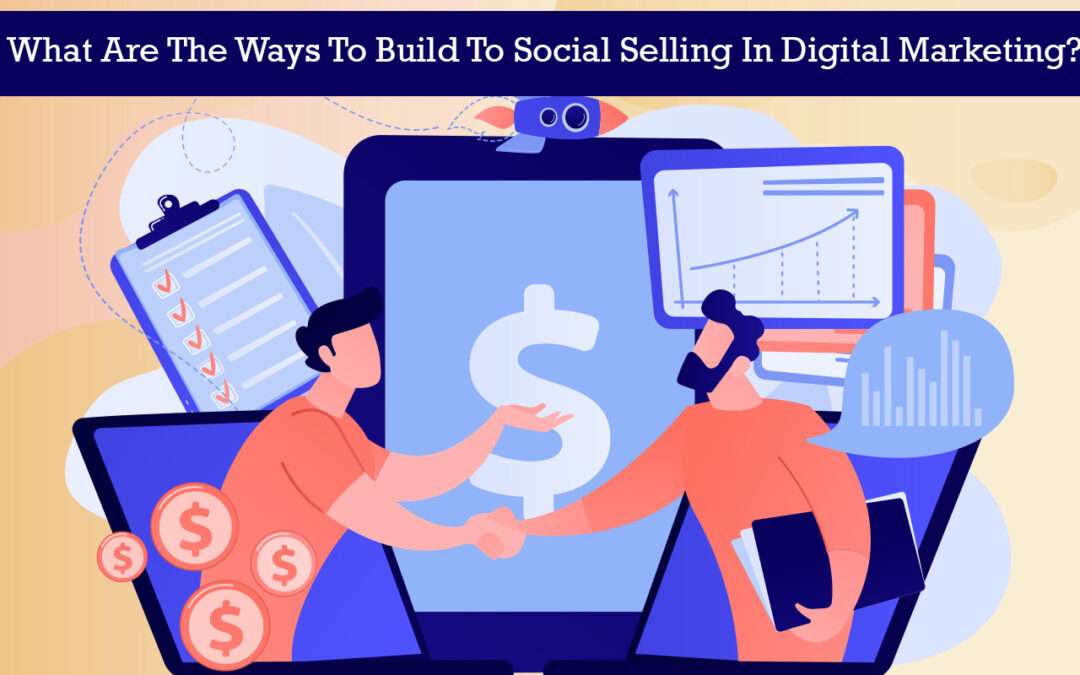How do you do social selling?
It is essential to note that although social selling is the word we often hear, it is also a significant and long-lasting skill that all salespeople should incorporate into their toolkits.
However, the concept behind social selling is straightforward in digital marketing. We use social media’s power and popularity to interact with prospects through content and engagement.
To put it another way, social selling is all about involvement, which necessitates a different strategy than traditional sales methods.
Apparently, effective social selling, on the other hand, takes time and dedication so getting started might be intimidating, especially if you don’t have a good strategy.
What is Social Selling?
Social selling is an excellent practice that focuses on creating relationships rather than active selling. However, this isn’t to suggest that aggressive selling has no role in social selling; the key is nuance.
We see many clothing firms excel at this by including photographs with their articles that allow readers to purchase specific goods by clicking on them.
Making unique and customized offers to your best prospects and converting pitches into tales are two more approaches.
Including sales in your daily routine is very important in digital marketing. To attract traffic to your site all you need to do is: enhance conversions, and raise sales, you can include the sales element of your job into the content portion by incorporating subtle sales strategies and calls to action into your content.

Why social selling is important?
1. It All Starts With Great Content When It Comes To Creating And Curating
In the realm of digital marketing, content still reigns supreme because it has the ability to engage. A content strategy, on the other hand, isn’t just about discovering any old blog and then promoting it extensively on social media.
You can utilize a variety of content kinds to catch your audience’s attention, including blogs, essays, whitepapers, videos, photographs, infographics, and more.
Start by thinking of ideas and subjects that would be relevant to your audience if you were to pursue your own content development strategy.
2. Social Selling Is A Sales Revolution
Cold calls, lead qualification, and sales demos aren’t as effective as they used to be. Education, social media networks, and involvement are all part of the new sales approach.
The sales team is on the lookout for a partner to assist them with the changeover. Marketing is in an excellent position to assist.
Sales can provide additional information to marketing about what material is being used and shared. What type of content should the market produce more of and what type of content should the market produce less of?
The development of marketing is social selling. Before heading to the store, we no doubt performed all of our research online in order to be aware of the product.
You can also use your smartphone to conduct additional research while at the store.
3. Engage: Start Conversations with Content
Because social sales are all about leveraging information to promote engagement among prospects, one of the biggest differences between a conventional content marketing plan and social selling is what happens after publication.
Starting and participating in conversations, asking and answering questions, commenting on posts, reacting to comments, taking care of customer service issues, resolving complaints, and otherwise connecting with your audience are a few instances.
The main goal in digital marketing is to establish your brand, demonstrate your personality, develop relationships with specific prospects, and convert audience members and prospects into devoted customers.
4. Sell: Increase The Impact Of Promotions By Using Social Media Engagement
Because the emergence of the public internet has forever transformed the way customers shop and act, sales have evolved dramatically over the last few decades. Rather than waiting for companies to come to them (in the form of television, print, and other advertisements), customers now use the internet to find the businesses they want to support.
Social selling should be a part of any modern sales strategy, but it’s still new enough that adopting it into your daily routine now will offer you an immediate advantage over your competitors and help you close more deals.
Even if incorporating social selling into your daily routine appears difficult or unachievable, keep in mind that it is possible and well worth the effort.
In fact, once you’ve got the pattern down, you’ll usually only need to devote 30 to 50 minutes each day to these chores, and you’ll be rewarded with more prospects, better conversions, greater traffic, more consistent engagement, and more revenues in the end.

